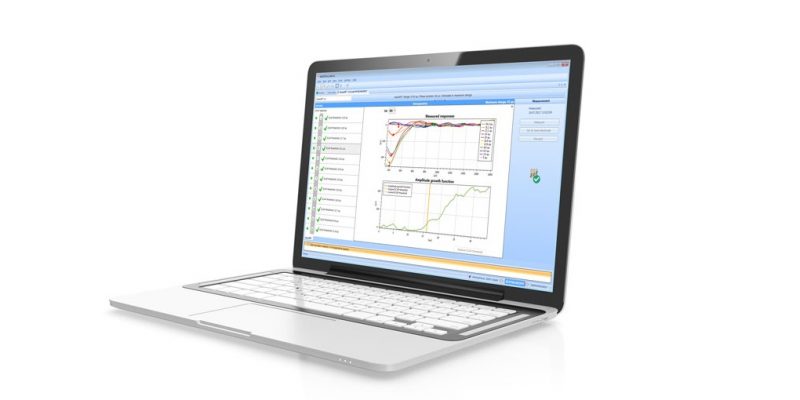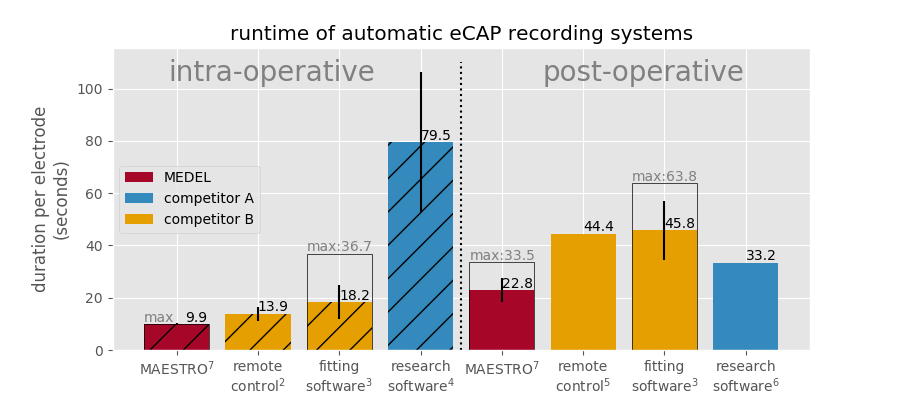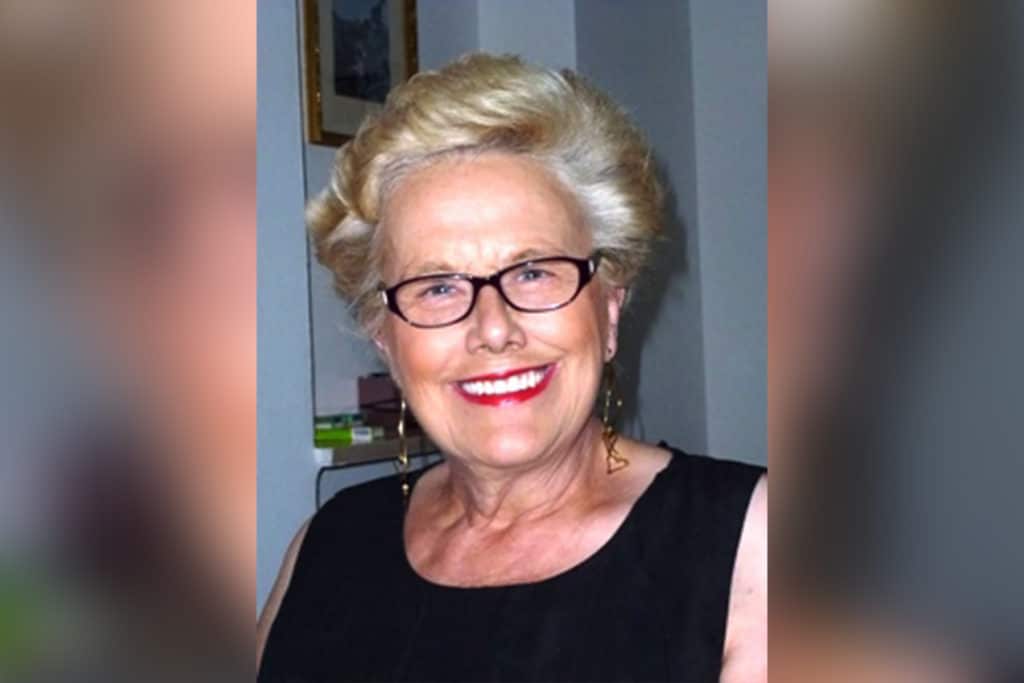MED-EL
Published Nov 08, 2017
AutoART & MAESTRO 7.0: Fast, Intuitive, Reliable ECAP Measurement

When you’re fitting cochlear implant recipients, objective measures can be a very useful tool. For example, objective measures can quickly confirm implant function. They can also provide valuable insight into the physiological health of the auditory system.1
On the other hand, time is valuable, especially during a fitting session. That’s why objective measures should be simple and practical, so that you can routinely perform them for your patients without losing time or focus.
One widely used objective measure is electrically evoked compound action potentials (ECAPs). This method stimulates the cochlear implant electrode array to measure the response of the auditory nerve. This makes ECAPs a simple and effective measurement of how the auditory nerve responds to stimulation.
Generally, ECAPs can be used to explore the auditory nerve response at each electrode contact on the cochlear implant array. This allows you to quickly verify electrode-nerve interface intraoperatively. ECAPs can also offer helpful guidance in establishing fitting levels, and may be especially useful where behavioral responses are limited or uncertain.
We’re excited to introduce AutoART, a quick and completely automatic ECAP measurement tool in our MAESTRO 7.0 system software.
There are three key benefits we’ve incorporated into AutoART:
- Simple & intuitive to use
- Accurate, reliable data
- Fastest automatic ECAP recording system2,3,4,5,6,7
Today, we’re going to look at how AutoART’s fast, intuitive, and reliable objective measure tool let you focus your time and energy on your patients.
Ease of Use
Let’s start with how easy it is to use AutoART in MAESTRO 7.0. This simplicity is a key part of an overall intuitive workflow design that makes MAESTRO 7.0 our most user-friendly software ever. Even if you’ve never used our MAESTRO software before, you can quickly become comfortable with MAESTRO 7.0 and AutoART.
Previously, MED-EL fitting software offered manual measurement and analysis of Auditory Nerve Response Telemetry (ART) on each electrode channel. This method is still available in MAESTRO 7, but based on extensive clinical feedback, we have created a robust automatic process for measuring auditory nerve responses.
AutoART is simple to use—you just click one button to automatically measure and analyze all electrode channels. You can also easily pause or skip electrodes during the measurement.
AutoART automatically analyzes all the data, so you can get clearly defined ECAP thresholds without the need for time-consuming manual analysis.
The intuitive design also makes it simple to quickly and easily perform intraoperative AutoART to confirm implant function and auditory nerve response.
FineGrain Precision
AutoART isn’t just simple to use—it’s also an exceptionally accurate and reliable means of measuring ECAP thresholds.
In other ECAP tools, such as NRT™ & NRI, the stimulation on an electrode is generally repeated at a certain charge. Then the charge is increased by relatively large steps and repeated again until a nerve response is detected. The threshold then has to be refined with an up and down stimulation pattern.
Unique to AutoART, the stimulation intensity is continuously increased in very small steps. This FineGrain method enables a very precise calculation of the ECAP threshold for each electrode. This also offers a predictable and relatively smooth loudness increase, making it easier for patients to anticipate loudness growth.
Once ECAP threshold is determined, the next electrode is stimulated. The electrodes are scheduled in a pre-defined sequence that automatically switches between middle, apical, and basal channels. AutoART measures all channels by default, but if testing is stopped, this order ensures measurements are well-distributed across the cochlea.
The algorithm also gathers response data from more than one recording electrode. The recording electrode with minimum artifact is automatically selected—removing the need to manually vary recording electrode to reduce artifact.
Advantages of AutoART:
- Precise FineGrain calculation of auditory nerve ECAP threshold and slope
- Predictable loudness growth for greater patient comfort
- Measurements across all electrodes or an automatically prioritized subset
- Multiple recording electrodes with automatic selection for minimum artifact
Automatic Analysis
So, after you click a single button, AutoART begins automatically measuring each electrode channel with FineGrain precision. Then what happens?
While recording each channel, AutoART automatically analyzes ECAP results. With advanced artifact reduction and a robust algorithm that accounts for a wide range of physiological properties, AutoART is able to provide a reliable and robust analysis of ECAP thresholds and auditory nerve function.
In testing, AutoART was able to correctly identify ECAP thresholds as reliably as experienced human experts.
AutoART uses an intuitive interface that displays ECAP thresholds for each available channel. A more detailed view of the measured responses and amplitude growth function is also available for each measured channel.
The benefit for you? AutoART automatically and reliably determines precise ECAP thresholds for each available electrode channel. That means you won’t have to spend any time or effort analyzing amplitude growth curves or other ECAP data. Of course, if you’d like to see more, the detailed ECAP data is always available.
- Automatic analysis
- Save time & effort
- No special training needed
- Immediate results
Fastest ECAP Measurement System
As you’ve seen, AutoART provides simple and reliable analysis of auditory nerve function. But that’s not all—AutoART also offers the fastest automatic ECAP recording system available. How is this possible?
Thanks to the rapid precision of FineGrain technology, AutoART can quickly cycle through electrodes across the entire array.

How fast is AutoART? This seconds-per-electrode comparison shows AutoART outperforms other ECAP tools—especially when you consider there are fewer total electrodes to measure with MED-EL arrays.2,3,4,5,6,7
Let’s take a look at intraoperative and postoperative measurements:
Intraoperative Measures
Intraoperative ECAP recording on all electrodes—measures ECAP thresholds and confirms electrodes are able to elicit responses from the auditory nerve. During intraoperative measures, pre-check quickly tests for ECAP presence, then FineGrain determines precise ECAP levels. Verifying FineGrain ECAP thresholds on all 12 electrodes only takes ~90 seconds, making it the fastest automatic full-array intraoperative ECAP measurement system available.
Postoperative Measures
At a first fitting session or follow-up, a full-array ECAP analysis of auditory nerve function takes approximately 3–4 minutes. These AutoART results can be useful as a starting point for first fitting. You can use the threshold profiles as guidance in estimating the profile of upper limit of the electrical dynamic range; in MAESTRO software this is the maximum comfortable level (MCL).
The cochlea’s neural health has been shown to relate to the slope of the ECAP growth function.1 AutoART offers an easy way to explore and monitor this without the need for additional measurements.
Subscribe & Share
As you can see, AutoART delivers a fast, simple-to-use, & reliable tool to measure ECAP thresholds and slopes, so you can focus your time and energy on your patients.
- Saves time & effort
- Simple interface
- Automatic ECAP analysis
- Precise measurements
- Fastest automatic ECAP measurement system
Looking for more detail on AutoART analysis and FineGrain precision? Check out this technical discussion with our Objective Measures team.
Want to hear more about how AutoART was created and what it has to offer? Check out this interview with Dr. Konrad Schwarz, a Senior Development Engineer with our R&D team at MED-EL.
Download the transcript of this AutoART interview.
Of course, there’s lots of great new tools in MAESTRO 7. Next time, we’ll look at ARTFit—which lets you quickly and easily create fitting maps based on AutoART results. We’ll be sharing detailed articles on ARTFit and all the other great benefits of MAESTRO 7, so make sure to subscribe now!
Want to begin using MAESTRO 7 in your clinic? Contact your local MED-EL representative to find out how to get started!
*Not all products, indications, and features shown are available in all areas. Please contact your local MED-EL representative for more information.
References:
1. Pfingst, B. E., Hughes, A. P., Colesa, D. J., Watts, M. M., Strahl, S. B., & Raphael, Y. (2015). Insertion trauma and recovery of function after cochlear implantation: Evidence from objective functional measures. Hearing research, 330, 98–105.
2. Irwin, C.; Tavartkiladze, G. A.; Bakhshinyan, V.; Deger, M. & Rose, S. (2014). Implications for Time Savings Using New Intraoperative Measuring Technology. Conference: ISPOR 17th Annual European Congress, At Amsterdam, The Netherlands, Volume: (Value in Health) November 2014 Volume 17, Issue 7, Page A610,
3. van Dijk, B.; Botros, A.; Battmer, R.; Begall, K.; Dillier, N.; Hey, M.; Lai, W.; Lenarz, T.; Laszig, R.; Morsnowski, A. (2007). Clinical Results of AutoNRT™, a Completely Automatic ECAP Recording System for Cochlear Implants. Ear and Hearing, 28, 558.
4. Van Den Abbeele, T.; Noel-Petroff, N.; Viala, P. & Teissier, N. (2014) Value of per and post-operative ECAP recordings in cochlear implanted children : correlations with fitting and performance. Proceedings of the 13th International Conference on Cochlear Implants and Other Implantable Auditory Technologies, 2014, Munich, Germany
5. Maruthurkkara, S. & Banna, R. Wireless NRT. (2012) Proceedings of the 12th International Conference on Cochlear Implants and other Implantable Auditory Technologies, 2012, Baltimore, USA
6. Biesheuvel, D.; Akhoun, I.; Dykmans, P.; Hamacher, V. & Frijns, J. (2014) Automated electrically evoked compound action potential (eCAP) screening with Express-NRI: method validation. Proceedings of the 8th International Symposium on Objective Measures in Auditory Implants, 2014, Toronto, Canada
7. Clinical testing of MAESTRO 7. (2017). Data on file with MED-EL.
MED-EL
Was this article helpful?
Thanks for your feedback.
Sign up for newsletter below for more.
Thanks for your feedback.
Please leave your message below.
CTA Form Success Message
Send us a message
Field is required
John Doe
Field is required
name@mail.com
Field is required
What do you think?
MED-EL





